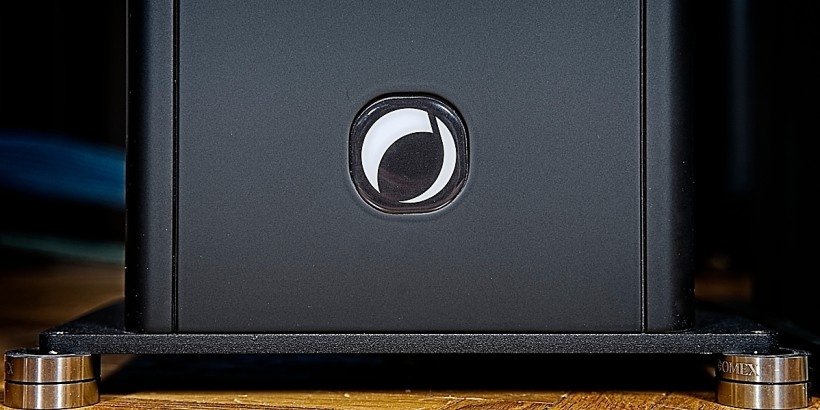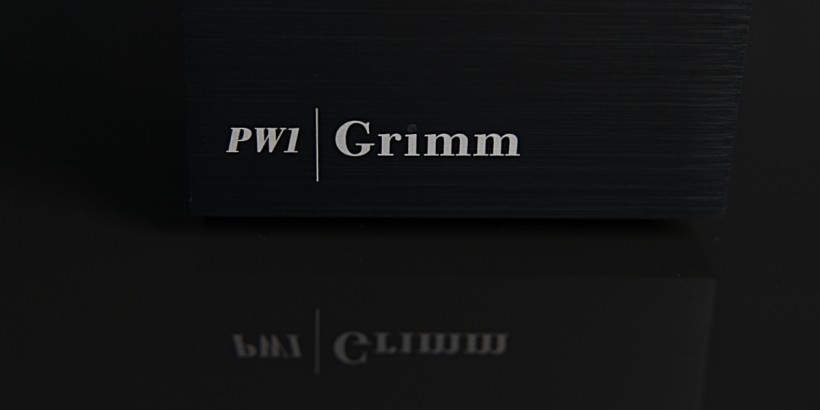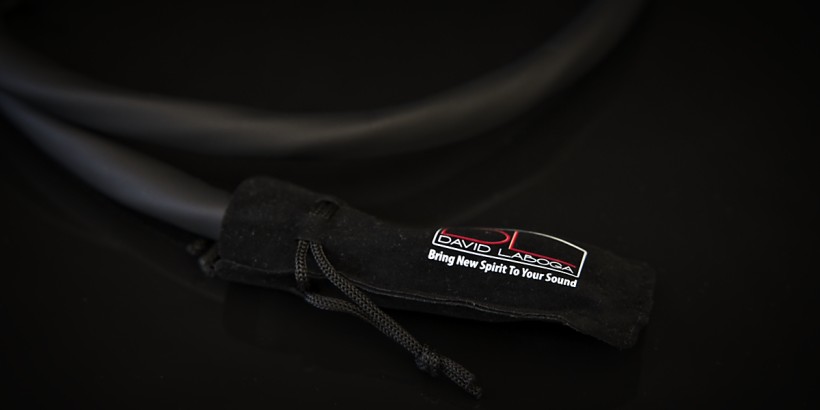It’s hard to believe but the J.Sikora brand has been with us already for 15 years! To celebrate the anniversary the Lublin-based company released a special version of their mid-level turntable, the Standard Max Supreme. With this impressive deck in the the headlines it is easy to miss another premiere product, the new J.Sikora KV9 tonearm. Let’s see what it has to offer.
Introduction
Even though Mr. Janusz Sikora, the brain behind J.Sikora’s designs, finished his first project in 2009, hence the celebration of the 15th Anniversary this year, my adventure with J.Sikora actually began only five years later, in 2014. Before that, what started as a result of disappointment caused by the performance of a turntable of a well-known brand Mr. Sikora bought, turned into an after-work project aimed to develop a better performer primarily for personal use. Primarily, since there was a group of other vinyl fans, friends of the designer, who hoped that they would also benefit from Janusz Sikora’s obsession with good sound.
Due to the expertise earned while working for dozens of years with metals and mastering their properties, having a well-equipped metal workshop, and an experienced crew who were able to make almost anything of any metal, the ultimate result of this side-project turned out to be truly impressive. It was actually so good, that many of those aforementioned friends who came to Mr. Sikora’s place and listened to his first deck wanted ones just like it for themselves. As he told me once, they gave him no choice but to make more units.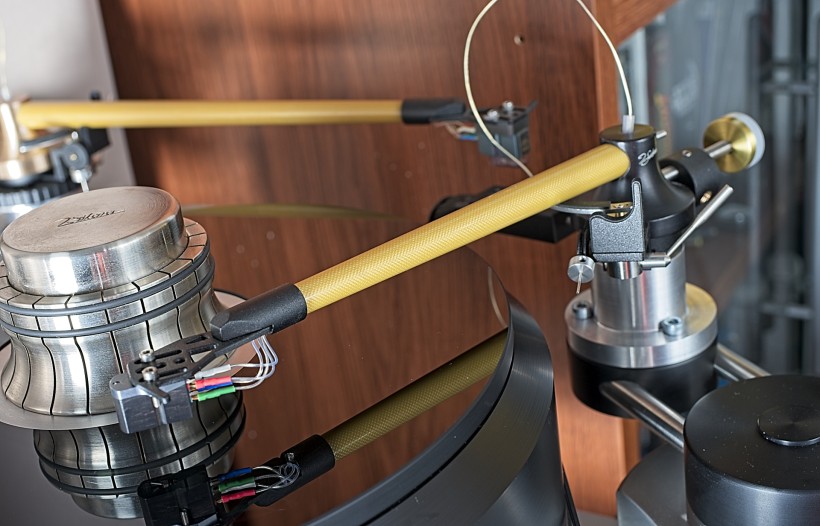
The rest is history, as they say. The exciting information about a ‘damn good deck’ kept spreading among the friends, and friends of the friends, and their friends too, and so on. Soon, only by means of word-of-mouth many people in Poland (and beyond) learned, that there was an interesting and highly competitive product in terms of both, performance and top quality make and finish made in Lublin and wanted it for themselves.
In 2014 a group of the very same friends, happy owners of Janusz Sikora’s turntables, (according to Mr. Sikora’s own words) forced him to present his products, as at the time he had already developed a second deck as well, at the Audio Video Show in Warsaw. The presentation turned out to be a huge success, and many more people from around the world learned about J.Sikora turntables and appreciated their outstanding performance.
It took the company a while to turn this private DIY project, into a part of their business that later became their main, and ultimately the only, core one. Some time after this first public presentation at the AVS in Warsaw I got a chance to assess the first J.Sikora commercial product in my room and write the very first review of the model back then called Basic, which later became Standard. And it was sort of a revelation for me, a long-time vinyl fan, so much so that I soon ordered my unit for personal use and as a reference deck for my reviewer’s duties.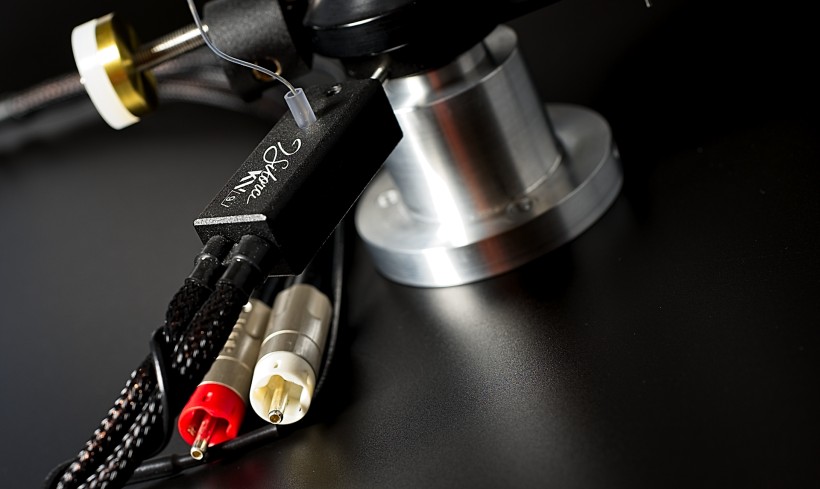
The ‘revelation’ part was two-fold. For one, at the time there were not that many Polish products that were not only good performers but combined good sound with a perfect make & finish. J.Sikora’s decks were among the very few already back then (!). Secondly, the performance was word-class, right off the bat putting these Polish turntables among the very best ones in the world. Still today, there are not that many Polish audio products that belong to this category. The number is slowly growing but J.Sikora was probably the very first and while it started at such a high level its products only got better over the years. That’s quite an achievement!
The deck I acquired back then is still with me today, although over the years some upgrades have been introduced to it. The unit I became a proud owner of was what later became an enhanced version called Standard Max. I used it paired with Schroeder CB tonearm (at the time J.Sikora offered them mostly with Kuzma arms), at least until a few years later the Polish company introduced their first tonearm, the incredible KV12. In my test, it proved to be an amazing performer and gave me no choice but to replace Schroeder. Later, when the Max Zirconium series was added to the lineup, after reviewing both versions I added the KV12 Max to my deck as well, although choosing between 12 and 9-inch versions was really difficult because they both are phenomenal performers and the differences between them are almost irrelevant.
Design and Features
The J.Sikora KV9 tonearm, same as all its predecessors, is an oil-dampened unipivot design. Its effective length is 228,6 mm and the effective mass is 11,2g (vs 10,7g of the KV9 Max). One of the key features of all J.Sikora tonearms is the arm’s tube made of Kevlar or polyparaphenylene terephthalamide. The original model, KV12, featured quite a large diameter, conical-shaped tube, and one of the key differences the Max Zirconium introduced was a smaller diameter, lighter tube (still made of Kevlar, though).
I mentioned it before, but let me repeat it once more. While Kevlar was used in audio before with good results, it had never, as far as I know, been used for a tonearm before Mr. Sikora thought of that. It is a difficult material to work with but repeating the process of building dozens of arms gave J.Sikora’s crew the experience necessary not only to make them well but to find a way to make smaller diameter tubes. As you may already know there are more differences between Max Zirconium tonearms and the original KV12. One of them is reflected in the name – tonearms’ bearing features Zirconium to improve its performance. As it is a non-conductive material, to ensure the grounding of the headshell manufacturer had to find a way to fit the fifth wire into the smaller tube. And they did.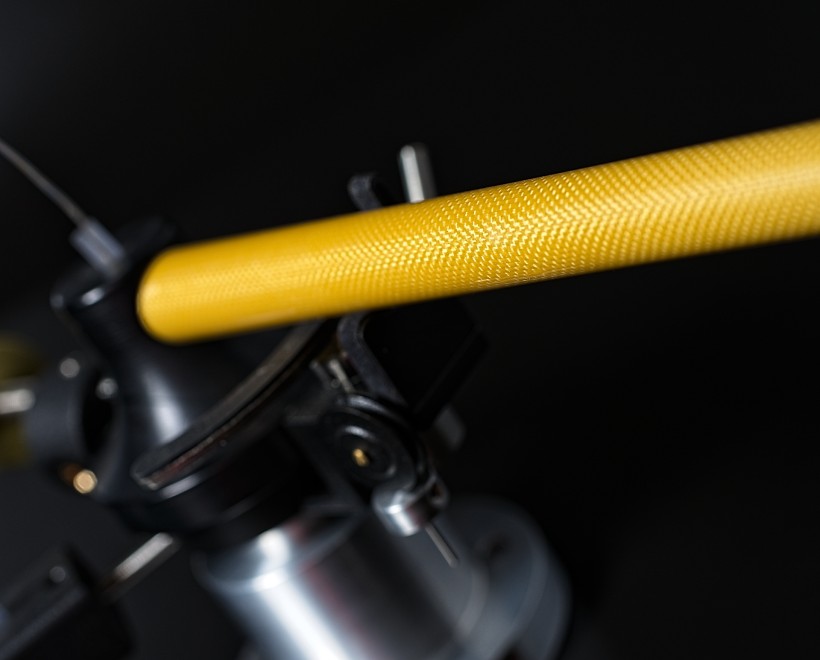
Now, the name of the ‘entry-level’ tonearm may suggest that it is closer relative to the original arm than it is to Max Zirconium Series ones. It is only half-true. First of all, it does use the smaller Kevlar tube, the new headshell, and the new, smaller tonearm bearing housing, all designed for the top line. It also features gold-plated copper wiring (originating from Soyaton) rather than silver one, originally used for KV12. It goes uninterrupted from the cartridge’s pins to RCA or XLR plugs on the other end of the phono interconnect. All that makes the new KV9 look and feel more like the Max Zirconium Series than the ‘regular’ KV. That is until you look into the details.
To make the cheapest tonearm in the lineup manufacturer had to look for ways to reduce the costs of making it while offering still a performance worthy of the least expensive, but still worthy J.Sikora’s hard-earned renown Initial deck. Borrowing some solutions from the top line surely helped, but wasn’t enough and so the main bearing uses steel rather than ceramics, so no Zirconium. Multiple metal elements of the arm and bearing’s housing are made of aluminum (and painted black) instead of bronze and brass (in their natural colors).
The same goes for the counterweights – plural, as with the tonearm in a familiar wooden box comes a selection of those in various sizes and weights to accommodate any cartridge – they are also made of a less precious metal. The J.Sikora KV9 is available either with or without the on-the-fly VTA adjustment. As it is supposed to be the least expensive offering, I guess most will buy it without it. That’s how I tested it. Sure, the on-the-fly adjustment is handy and useful if one plays records of various thicknesses, but one can also easily live without it.
Even without the fancy on-the-fly VTA adjustment one can still change it in a more traditional way, using a single screw in the arm’s column. Counterweights will help to adjust VTF, a single screw in the main counterweight will allow you to deal with azimuth. There is an antiskating weight but as in all J.Sikora tonearms it is there mostly ‘for show’, as the loop of arm’s wiring does the job perfectly as long as you keep it upright. While some elements of the KV9 may have been made of less precious metals, the design as a whole still feels pretty luxurious and it is perfectly made and finished. As with all other models, this one is also available in a natural yellow color or painted black.
Sound
The KV9 tonearm came to be because J.Sikora’s distributors asked for a less expensive model for the cheapest Initial deck. I talked to Mr. Sikora a few times in the past when some distributors asked him to design a deck even cheaper than the Initial. He tried, but the results were highly unsatisfying, and so he decided he wouldn’t offer a product that couldn’t perform up to his expectations. That is why the Initial still opens the company’s lineup.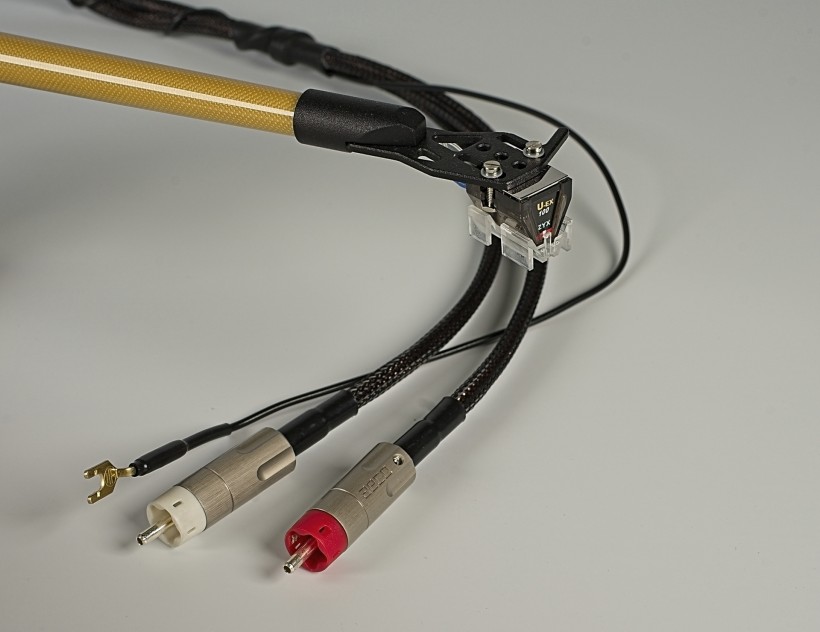
When it came to developing a cheaper tonearm he took a bit different approach. As you know, it all started with the KV12 model, and later came KV12 Max and KV9 Max. There was never the KV9 model, and one of the reasons was that making a shorter Kevlar tube (of the otherwise the same type as KV12) proved challenging. For the Max Zirconium series a new, smaller diameter tube was developed which allowed the company to make both, 12 and 9-inch versions. So when it came to making the KV9 this part of the Max Zirconium series was kept.
How to make the arm cheaper without starting everything from scratch (which didn’t work for a deck)? As the metal specialist, Janusz Sikora knew that he could replace some of the more expensive metal elements with less expensive ones thus reducing the production cost, and yet still achieve great sonic results. So that’s what he did keeping the general design of the KV9 Max, simplifying some solutions, and replacing some elements with others made of different, cheaper metals.
The results, I mean the performance of the KV9, surprised even the J.Sikora team. Sure, KV9 Max was still superior, but the sound quality achieved with the ‘cheaper’ version was, as they told me, still ‘damn’ impressive. Without explaining much about the changes they sent me a unit for this review, and after several days Robert Sikora called me to ask about my initial impressions. Spoiler alert (!) – I was as impressed as they were. Let’s move on to some details.
The KV9 was installed on my J.Sikora Standard Max deck. During the review, I paired it with several cartridges including Air Tight PC-3, Van den Hul The Frog, ZYX Ultimate Exeed 100, Skyanalog G2 mk2, and Le Son LS10 MK II. For most of the time I used my own phono stages, ESE Lab Nibiru MC and GrandiNote Celio MK IV, but some loaners, such as Accuphase C-47, and Linear Audio Research LPS-2 participated as well.
As you can see from the list above, for the test I paired J.Sikora KV9 with several cartridges, all Moving Coils, but from various price ranges. Over the course of the test, I learned that the reviewed arm worked perfectly with each of them proving that while a bit lighter than KV12 it is still a versatile competitor that will work well with most cartridges (apart from those of low compliance that require a heavier type). I won’t get into details of each setup because it would take too much space here, but rather focus on common conclusions drawn from those sessions.
Usually, I would start with describing my experience with the reviewed product leading you step by step through some of the records I played with it, building up to the conclusion. This time let’s do it differently. Why? Because, first of all, the performance of the J.Sikora KV9 is quite similar to that of their other arms reviewed and praised by me, as well as many other reviewers and users. Secondly and more importantly, the beginning of my listening session with the J.Sikora KV9 shook one of my firmest beliefs.
All my experience tells me that it comes very easy, almost natural, to accept changes (in the sound) for better (I am excluding the ‘wow’ effect here, because more often than not it turns out not to be an advantage of the reviewed item but rather something that in time becomes annoying), but the other way around comes way, way harder.
Sometimes, when you replace the said component with a better performer (unless the difference is huge, like a ‘couple of classes’ level big) you may not even notice or at least be unsure of the specifics of the improvement. Only when you go back to the previous, inferior component, do you realize almost immediately what elements of the performance get worse with it or ‘disappear’ altogether, which in turn points to the advantages of the better one. In other words, it is going back to inferior performance that is harder to accept and easier to pinpoint, so to speak.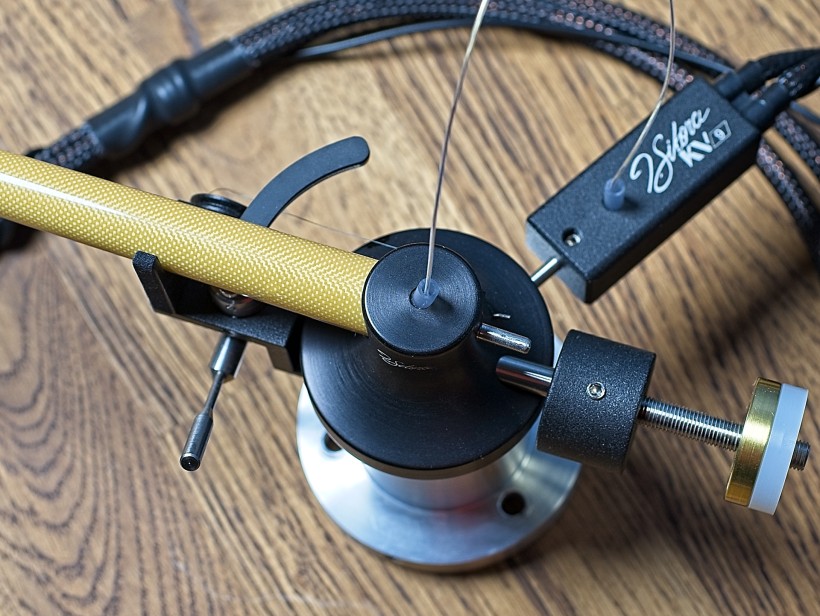
The ‘problem’ with the J.Sikora KV9 is that after switching from the original KV12 it feels as if the sound gets livelier, faster, more open, better overall, even if not by a large margin. And the 12-inch is supposed to be a better performer (assuming the pairing with a specific cartridge is as good as with the 9-inch), right? Sure, the KV9 is based on the newer, superior design, although it uses mostly the same materials as the old 12’’ version. So should it sound ‘better’? I’m not sure, but that’s my immediate impression. The only way to get more data is to switch (each time using my own Air Tight PC3 cartridge) to my KV12 Max Zirconium Series, so the top of the line I use on an everyday basis.
Yes, now I can hear a slightly better resolution, even more explosive dynamics, a quieter operation (lower stylus traveling noise), and a somewhat smoother, better flow of even more coherent music. So yes, the KV12 Max is superior to both other models, no doubts about it. And so, I go back to the tested KV9. Is it clearly inferior? It’s not as obvious as it should be. The performance is excellent, and listening to the music is so much fan, it is so immersive, that somehow all that superiority of the KV12 Max is not as unequivocal as I expect it to be. Adjusting to the difference (because, yes, the longer I listen to it the more I realize that it is there), and accepting that some elements of the presentation are not quite as good as with the top tonearm comes easy, almost natural, so exactly the opposite to I my belief I mentioned before.
What does it mean? I am not sure whether the J.Sikora team will like what I am about to say, but it seems to me that they might have done a bit too good a job and developed a stunning performer for a fraction of the price of the top model. Sure, the Max Zirconium Series models still offer superior, more refined, more resolving performance which becomes clearer and clearer the higher the class of accompanying components in a setup, but the difference is not that big as the price suggests (admittedly, in audio it never does). So the conclusion is clear. It is the J.Sikora KV9 that now offers the best price/performance ratio among all all four tonearms of this manufacturer. And in its price range, it is one of the best choices you can make.
To be clear, I love my findings as it means that more vinyl fans will be able to afford J.Sikora tonearm and get a taste of their incredible performance whether on Initial, or any other good deck. From users’ perspective, that’s a welcome practice of some companies, that develop their top products and then ‘trickle down’ some of the solutions to make still great sounding but significantly cheaper products. I wholeheartedly applaud such policy and particularly this particular result thereof!
So, as I’ve turned this review on its head and you’ve already read what usually is the ending of a review and learned my conclusions, it is time to try and let you know how did I come to them. First of all, which should not have come as a surprise for a man who knows all J.Sikora other products, KV9 is a real ‘killer’ in terms of dynamics and energy of the presentation it is able to preserve and convey. All the elements of any audio setup are ‘lossy’, and what I mean by that is that they lose some of the energy of the music they reproduce. That’s why it is so easy to differentiate music played live from any recording – the former has a much higher energy level.
J.Sikora KV9 belongs to those quite rare components that help to preserve the musical energy stored in a recording better than most. It would be perfect to have the KV9 Max Zirconium version side-to-side for a direct comparison, but having compared it to KV12 Max I believe that all three of them, and even the original KV12, are masters of energy preservation and offer an incredible dynamic range in both macro and micro scale. There is not much difference between them in these two areas. It is clear to me when I listen to a live album by SBB and Bastek Riedel, „Live” by AC/DC, „Live At The Checkerboard Lounge” by Muddy Waters (and Rolling Stones), but also to some of my favorite operas including „Carmen” with Leontyne Price or „Le Nozze Di Figaro” with Musica Aeterna conducted by Currentzis.
Whether rock, blues, or classical music, KV9 each time delivers a lively, immersive performance backed up by excellent PRAT, and an impressive resolution that allows it to deliver an abundance of details and subtleties, and it does so in an organized, yet effortless way. It is the latter feature that is yet another characteristic of all J.Sikora arms and decks. The music, no matter the genre, no matter how complex, is presented in a very easy, natural way, as if the hardware used to do it could move completely out of the way of music. It is still there, supervising, if you will, making sure that all the information read from the groove is passed on, supporting the process instead of taming some of its aspects, as some other ones tend to do.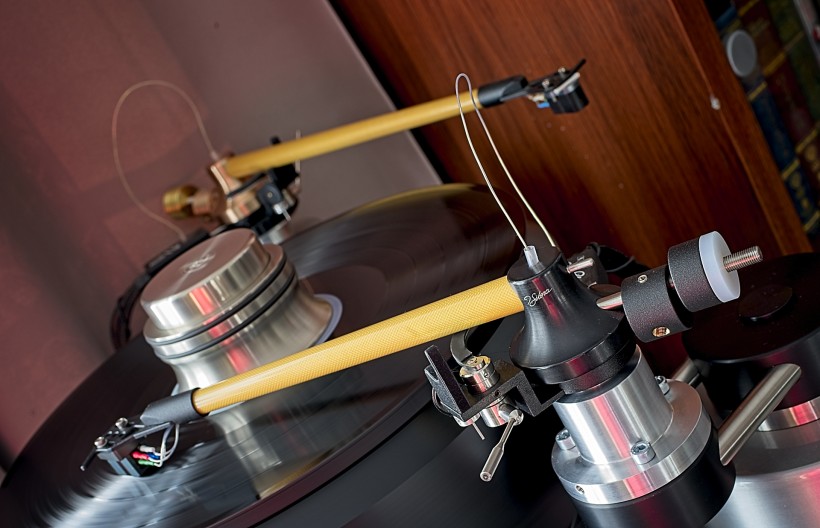
With more sophisticated albums / higher quality releases, be it Ray Brown Trio’s „Soular Energy”, Tsuyoshi Yamamoto’s „Misty” or Patricia Barber’s „Verse” the latest addition to J.Sikora’s tonearm lineup proves, that while it may not be quite on the absolute top level offered by the Max Zirconium Series siblings, it follows in their footsteps and comes surprisingly close. This is why, in my opinion, it belongs among the best, most refined arms money can buy today while costing way less than most of them.
Its ability to resolve even the tiniest details and weave them together into a coherent, pulsating, lively, colorful, honest, and emotional whole that is music is remarkable. Another quality common for all J.Sikora tonearms, an ability to not only convincingly render all the spatial aspects of any recording, as well as large three-dimensional phantom images placed precisely on the stage, but also to differentiate these elements album by album or even track by track, proves to me, that KV9 is a truly worthy addition to the brand’s lineup. What’s more, whether you like your music served ‘concert style’ as a whole, or prefer to delve into details to study individual performance and technique, or a timbre and texture of any instrument or vocals, J.Sikora KV9 shall deliver. Assuming you will let it by pairing it with a properly capable cartridge, deck, and the rest of the setup.
Using the tested arm with cartridges ranging from roughly a thousand to over three thousand euros allows me not only to check, how well each pairing works in technical terms but also to follow the progress of the sound quality with the installation of each more expensive and better-performing cartridge. KV9 pushes each of them to their limits and only my Air Tight sounds a touch better installed in the KV12 Max. Other cartridges offer the same level of performance regardless of the arm they are installed in with only minor, almost irrelevant differences that, most likely, result from a touch better or worse cartridge/arm matching.
Same as other J.Sikora tonearms, the latest addition to the range clearly shows differences between cartridges. It is them that decide whether the presentation is, say, a bit warmer or more neutral, slightly leaning towards midrange or well-balanced across the whole range, whether the focus is on richness and saturation or rather on clarity and transparency of the sound, and so on. Yes, each of them in this tonearm sounds particularly dynamic, energetic, and effortless, and the KV9 makes also sure that the PRAT is very good, but all that comes on top of inherent features of each cartridge. It seems to me that KV9 supports each pickup, enriches its performance but never hijacks it forcing it adjust to the arm’s characteristics. 
Summary
What’s the verdict? How good is J.Sikora KV9? I have told you that almost at the beginning of this review, but let me try again as I can answer this question in more than one way. It is so good that unless you intend to use it with at least 3 kEUR cartridge it makes no sense to spend more for KV9 Max. It is also so good that, in my opinion, in many (probably most) cases, people will choose it over the original 12-inch (unless the latter is a better partner for a particular cartridge because of its effective mass). It is so good that the manufacturer, having also recognized its class already decided to develop KV12 MK2, which most likely will be introduced sometime next year and will bring the KV12 to its rightful place, as a better or at least equal performer to the KV9.
So yes, it is another excellent tonearm by J.Sikora that can compete successfully within its price range as well as against many more expensive arms. It will be a perfect partner for J.Sikora’s own Initial deck, but it will do also great as a second arm on their more expensive decks, and it can be used on other brands’ decks. I am sure that given a chance, whether in natural yellow or black, it will shine bright and deliver stunning performance paired with almost any cartridge and deck as long as they can keep up with it.
Price (when reviewed):
- J.SIKORA KV9: 4.200 EUR
Manufacturer: J.SIKORA
Technical specifications (according to the manufacturer):
- Effective length: 9” / 228.6mm
- Available finishes: natural yellow and lacquered black matte
- Oil-damped unipivot
- Mass: 160g
- Mounting distance: 212 mm
- Effective mass: 11.2 g
- Wiring: 24K Gold plated 6N OCC Copper
Associated equipment:
- Digital source: a custom passive server with WIN10, Roon, Fidelizer Pro 7.10, JCAT NET XE, and JCAT USB XE cards with FERRUM HYPSOS Signature power supply, KECES P8 (mono) linear power supply for the server, JCAT USB Isolator
- D/A Converter: LampizatOr Pacific 2 +Ideon Audio 3R Master Time (USB signal regenerator)
- Analog front end: J.Sikora Standard MAX turntable, J.Sikora KV12 tonearm, J.Sikora KV12 MAX tonearm, AirTight PC-3, Audio Technica PTG33 Prestige, phono stages: Grandinote Celio MK IV, ESE Lab Nibiru V 5.
- Power amplifiers: GrandiNote Shinai, Circle Labs M200, Art Audio Symphony II (modified)
- Preamplifier: Circle Labs P300
- Loudspeakers: GrandiNote MACH4, Ubiq Audio Model ONE Duelund Edition.
- Interconnects: Bastanis Imperial x2, Soyaton Benchmark, Hijiri Million, Hijiri HCI-20, TelluriumQ Ultra Black, KBL Sound Himalaya 2 XLR, David Laboga Expression Emerald USB, David Laboga Digital Sound Wave Sapphire Ethernet
- Speaker cables: Soyaton Benchmark Mk2
- Power cables: DL Custom Audio 3D-S-AC Connect, LessLoss DFPC Signature, Gigawatt LC-3
- Power: Gigawatt PF-2 MK2 and Gigawatt PC-3 SE Evo+; a custom power line with Gigawatt LC-Y in-wall cable; Gigawatt G-044 Schuko and Furutech FT-SWS-D (R)
- Network: Silent Angel Bonn N8 + Silent Angel Forester F1 + optical LAN isolator
- Racks: Base VI, Rogoz Audio 3RP3/BBS
- Anti-vibration accessories: ROGOZ-AUDIO SMO40 and CPPB16 platforms and ROGOZ AUDIO BW40MKII feet, OMEX Symphony 3S, Franc Accessories Ceramic Disc Slim Feet and Wood Block Platform, Graphite Audio CIS-35 and IC-35 Premium






















